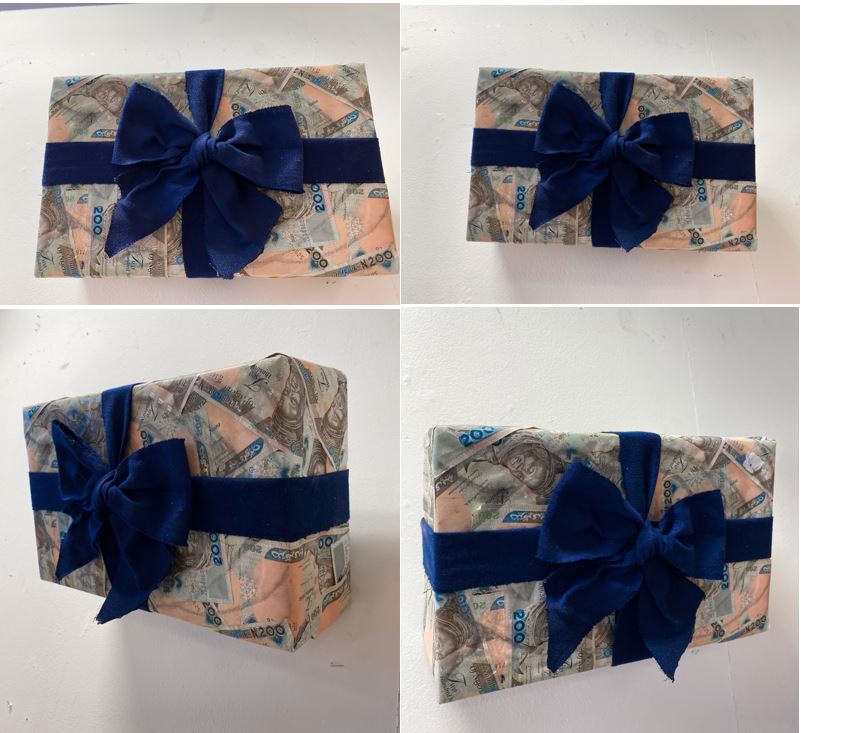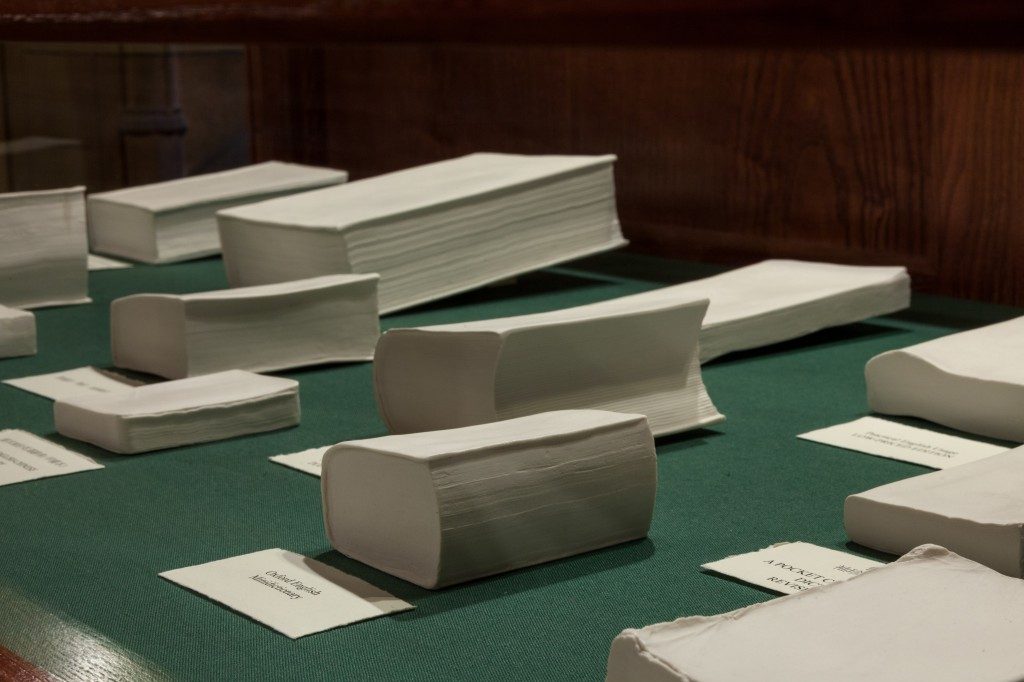Every year the Collection runs a number of Live Briefs for our students to work with – and respond to – the Collection in different ways. This month on our blog we feature new work by MA Contemporary Fine Art student Ann Olih, who responded to porcelain sculpture ‘Lost in Biliterate and Trilingual’ (2014) by Annie Lai-Kuen Wan.
This is a response to Annie Lai-Kuen Wan’s ceramic series ‘Lost in Biliterate and Trilingual’
THE POINTLESS GIFT- Ann Olih
On 26 October 2022, the Central Bank of Nigeria announced the introduction of redesigned 200, 500, and 1,000 naira notes into the country’s financial system. However, since the notes were unveiled, Nigerians have been struggling to access them from banks and ATM cash points. Despite the frustration expressed by Nigerians over their inability to access the new notes, the CBN extended the deadline for the phasing out of the old notes from 31 January to 10 February. Yet, many Nigerians have still had a hard time getting the new notes.
The Supreme Court gave an order restraining the CBN from going ahead with the implementation of the 10 February deadline set for the phasing out of the notes, but both the President and the CBN governor refused to adhere to the court order. In the midst of the uncertainties, many Nigerians have taken to the streets in major cities to protest the hardship caused by the policy.
Millions of Nigerians have continued to grapple with hardship amid the cash crunch that has worsened business transactions and stifled trade in the informal economy. In parts of southern Nigeria, many protesters were said to have sustained injuries, and some were arrested for vandalizing bank properties. I decided to represent the current issues faced by Nigerians with the naira note redesign and its inaccessibility, the frustration, disappointment, shattered hopes and the fear of the unknown with this gift box. This gift box has little or no practical value, and will not be relevant or appreciated by the recipient. It is designed to be deliberately difficult or impossible to access.
We are faced with the dilemma of either keeping the gift box at home as an aesthetic piece which has no value to us. Alternatively, we could take the risk and tear the old notes to see the contents of the box, only to realize that there are no new notes inside.
Description: The empty box was covered with layers of 36 (which represent the number of states in Nigeria) pieces of the old 200 naira notes to create a wrapping sheet. The notes were glued in such a way that makes it difficult to reach the box itself except torn out.
The blue ribbon used is from an ASO-OKE, Asooke is a type of traditional Nigerian fabric that is woven from cotton or silk threads into narrow strips and then sewn together to create a larger piece of fabric. It is mainly used in Nigeria for making traditional clothing such as agbada, gele, iro and buba, and other ceremonial attire.
Ultimately, this gift fails to meet the needs or desires of the recipient (Nigerians), and is even seen as a burden rather than a thoughtful gesture.
Reference 1 – Premium Times Ng
Reference 2 – Adetayo, O. (2017). Aso-Oke Fabric: Origins, Types and Uses in Nigeria.

Author bio:
Ann Olih is a self-taught Nigerian artist currently living in the UK. she began drawing in 2015 as a hobby and has since then been developing her skills to become a professional artist. She is known for her use of bold, bright colors and patterned GELE(head gear). Her art is inspired by her African heritage, and she often incorporates African themes and motifs in her paintings. She also draws inspiration from her personal experiences and the people she meets, and this is reflected in the emotional depth of her artworks. Despite facing challenges as a self-taught artist in a competitive industry, She has remained dedicated to her craft and has continued to grow and evolve as an artist. Her talent and hard work earned her a spot at the University of Salford’s Master’s degree program on Contemporary fine Art. annieblaq.com
About the Collection artwork:

Annie Wan Lai Kuen is a Hong Kong-based ceramic artist. She takes everyday objects as her subject matter and transforms them into beautiful objects injected with meaning.
Lost in Biliterate and Trilingual comprises 18 small porcelain sculptures, each taking the form of a dictionary.
The title of the artwork refers to the language policy adopted by the Hong Kong government after the handover of the territory from the United Kingdom to the Chinese in 1997, which has meant that Cantonese, English and Mandarin all feature in Hong Kong political and daily life. In order to create this work, the artist took moulds from her own dictionary and those belonging to her friends; the resulting casts capture the bent spines, battered corners and creased covers of the books. However, in porcelain form, these sculptural books cannot be opened and remain mute, perhaps suggesting the limitations of translation and communication, or acting as monuments to the analogue world.
The work was acquired following Asia Triennial Manchester 2014.